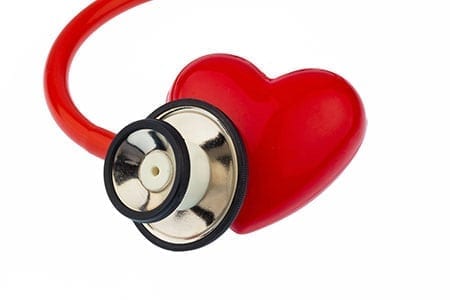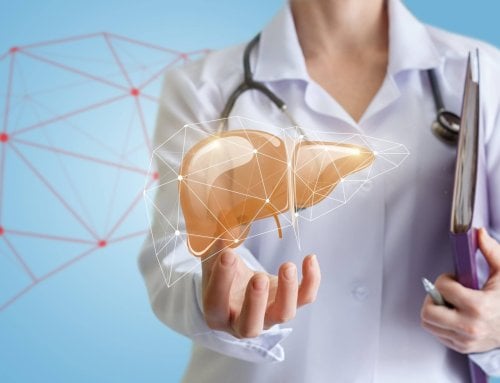Heart attack rates have fallen in the last four decades due to increased public awareness about heart health, quicker emergency paramedic treatment, improved medical procedures and drugs in all groups except for women under the age of 55. Many of these women suffer from diabetes. A study published in ‘The Lancet’, a Diabetes Endocrinology Journal, states that “the cardiovascular risk doubles for those who develop diabetes type 2 prior to age 40 compared to those who have late onset diabetes”. Obesity rates are also driving up the number of young people who develop diabetes type 2 which turns to heart issues globally. Dr. Song, a researcher from the United Kingdom, states “the longer the exposure to an atherogenic environment, the more the cardiac problems”.
Men with diabetes are also at a higher cardiac risk than the general population but tend to experience more traditional heart symptoms including nausea, neck, stomach or chest pain, as well as arm or chest pressure, shortness of breathe and cold sweats. They seek treatment more quickly and are often taken more seriously in an emergency situation. Women with diabetes usually experience atypical heart symptoms including dizziness, fatigue or just feeling run down. Many people with diabetes experience no symptoms and have silent heart attacks which may not be documented until much later. If you experience any of these symptoms call 9-1-1 immediately.
Since February is Heart Month and diabetes and heart disease are extremely connected, here are some tips to help you lower your heart disease risks.
The American Heart Association lists “Life’s Simple 7 Checklist” to help protect you against the risk of M.I., stroke and heart failure even with diabetes.
 Blood pressure. The most recent guideline from the American Diabetes Association is achieving a blood pressure of 140/80 when being treated with diabetes. Losing just 5-10% of your body weight can lower blood pressure readings. Reducing daily salt intake to below 2300mg to 1500mg a day can make a significant difference since many people are salt sensitive. The average person consumes somewhere between 3000-5000mg of salt a day. Increase potassium rich vegetables and fruits (using moderation in fruit) including mushrooms, leafy greens, squash, white or lima beans, tomatoes or tomato sauce, sweet potatoes, avocados, cantaloupe or honeydew melon, kiwi or grapes since potassium may help lower blood pressure. Eat less processed or frozen entrée meals, bagged and boxed foods to reduce sodium intake. Learn to read food labels. Eat probiotics. Eat cultured foods including yogurt, kefir and buttermilk or fermented foods like kimchi which according to Hypertension Journal “can help lower blood pressure”. Caffeine amounts may affect blood pressure if you are sensitive so know your limits. It is worthwhile to check your blood pressure readings at home a few times a week at different times of the day especially 30 minutes after drinking caffeine. If exercise, adequate sleep 7-8 hours average (less than 6 hours is dangerous due to elevated cortisol levels which promotes inflammation), not smoking, limiting or eliminating alcohol, reducing stress, weight loss and cleaner eating do not help, your doctor will suggest one or more blood pressure medications. Report drug side effects to your MD and never stop taking your medication. Make sure you understand the directions of how and when to take them.
Blood pressure. The most recent guideline from the American Diabetes Association is achieving a blood pressure of 140/80 when being treated with diabetes. Losing just 5-10% of your body weight can lower blood pressure readings. Reducing daily salt intake to below 2300mg to 1500mg a day can make a significant difference since many people are salt sensitive. The average person consumes somewhere between 3000-5000mg of salt a day. Increase potassium rich vegetables and fruits (using moderation in fruit) including mushrooms, leafy greens, squash, white or lima beans, tomatoes or tomato sauce, sweet potatoes, avocados, cantaloupe or honeydew melon, kiwi or grapes since potassium may help lower blood pressure. Eat less processed or frozen entrée meals, bagged and boxed foods to reduce sodium intake. Learn to read food labels. Eat probiotics. Eat cultured foods including yogurt, kefir and buttermilk or fermented foods like kimchi which according to Hypertension Journal “can help lower blood pressure”. Caffeine amounts may affect blood pressure if you are sensitive so know your limits. It is worthwhile to check your blood pressure readings at home a few times a week at different times of the day especially 30 minutes after drinking caffeine. If exercise, adequate sleep 7-8 hours average (less than 6 hours is dangerous due to elevated cortisol levels which promotes inflammation), not smoking, limiting or eliminating alcohol, reducing stress, weight loss and cleaner eating do not help, your doctor will suggest one or more blood pressure medications. Report drug side effects to your MD and never stop taking your medication. Make sure you understand the directions of how and when to take them.- Understand Cholesterol. Make sure your LDL cholesterol (70 or below) and triglycerides (150 or below) are managed. This measure is extremely important to lower cardiovascular risks and with lifestyle adjustments can often be accomplished in 3 months. Elevated blood sugars may raise triglyceride levels so keeping a balance between the ABCs: blood sugar, blood pressure and cholesterol levels are crucial. As with blood pressure, lowering LDL cholesterol requires lifestyle changes including weight loss, exercise and dietary changes. Eating trans-fat which is still found in some baked goods, frozen pizza and stick margarine should be totally avoided. Trans-fat is slowly being removed from all food products. Add fiber, a small amount of nuts, olive oil for cooking and salad dressing and eat foods high in Omega 3s such as wild salmon, sardines and blue fin tuna which can all help reduce LDL. Sometimes numbers do not decrease even with these changes due of genetics. That is when your physician may recommend a statin medication such as Zocor, Lipitor or Crestor. Most statin medications are taken in the evening. People frequently have side effects from statin medications such as muscle aches, pains and enzyme elevations. They may be offered a new class of medication called PCSK9 inhibitors. At this time the price is extremely high and is only used in limited situations but it is worth a discussion with your physician.
- A1C. Keep blood sugar as close to normal as possible. The American Diabetes Association guidelines remain at “maintaining an A1C level between 6.5%-7%”.This last year included information for physicians to treat each case “on an individual basis.” New onset diabetes without complications may warrant a lower A1C value while the elderly with existing complications may require a higher A1C. Again, life style changes are paramount including weight loss, healthy eating and exercise. When this combination fails then diabetes medications are added. Seeing a diabetes educator/dietitian should be included in your treatment plan. There are many new oral medications, injectables as well as insulin combinations to help with improved blood sugar control.
- Stay active. The present guideline remains ‘a minimum of 30 minutes of movement; 5 times a week”. This routine can be broken into smaller increments if time or physical ability prevents the full 30 minutes to be completed at one time. Swimming, pool aerobics, walking in the pool, walking in the park or on a treadmill or elliptical, riding a stationary bike, spinning, dancing, doing home exercise videos are all acceptable. A study review of yoga in 2014 states “yoga is good for your cardiovascular health since it helps with stress, decreases BMI, blood pressure, lowers heart rate and cholesterol.” Choose what pleases you and what you will stick with. Just stay active as much as possible even getting up from your desk or easy chair on the hour to stretch is beneficial.
- Lose weight. The term “creeping obesity” explains slow long term weight gain that does not go away. It is the pounds that add up over the years. Try to tackle it with small changes and set simple goals. At the beginning of the year, expectations can be high but you must stay focused for the long haul and use any tool to help you stay motivated. Each pound of weight loss results in a reduction of five pounds of stress on the knees. Hips function better as well as your lower back. Weight loss causes a decrease in inflammation since fat cells may secrete inflammatory chemicals into the blood stream. Heart disease is partly caused by inflammation.
- Do not smoke. The chemicals in tobacco cause a multitude of problems including raising blood pressure, increasing blood clot risk, changing the inner lining of the blood vessels, causing fatty artery build-up and reducing protective HDL levels. This is the time to try all avenues to stop smoking. Talk to your health care provider about patches, gum, support groups, Chantix, acupuncture, hypnosis, talk therapy, step programs or go cold turkey. You will save money and improve your over all health.
- Eat a variety of foods in moderation. One of the most suggested eating plans for heart health remains “The Mediterranean Diet”. This plan avoids processed foods and welcomes wholesome choices. Included is olive oil which is a monounsaturated healthy fat but high in calories and must be used in small quantities. There is no trans-fat and only a small amount of red meat and dairy allowed due to the saturated fat. Red wine is part of the plan, if you drink, which includes anthocyanins from the grapes skins as well as Resveratrol and tannins which are heart healthy. Fish is plentiful and advantageous due to the Omega-3 fatty acids which are protective, reduce triglycerides, reduce blood clotting and improve blood vessel lining. Whole grains, small portions of fruit, nuts, seeds, beans, legumes, herbs, spices and vegetables should be the base of most meals in a combination. Spinach is a wonderful heart healthy and diabetes-friendly vegetable since it is rich in folate and may improve the arterial elasticity to lower heart attack risk. Dietary fiber from plant based foods should include 25-38 grams daily to lower heart disease and prevent inflammation. According to the Academy of Nutrition and Dietetics “adding 7-10 grams of daily fiber can decrease heart disease by 9%”. Prebiotics help feed gut bacteria, lower inflammation and improve heart health. Include foods such as onions, leeks, shallots, garlic, lentils and garbanzo beans since prebiotics may assist in absorbing nutrients more efficiently. These are all included in the Mediterranean diet.
Heart month is a good time to recognize the association between diabetes and heart disease. There are many simple ways for you to avoid heart attacks, strokes and heart failure. Always make sure you are also following up with your medical team and you can create a winning combination!
NOTE: Consult your Doctor first to make sure my recommendations fit your special health needs.












Leave A Comment